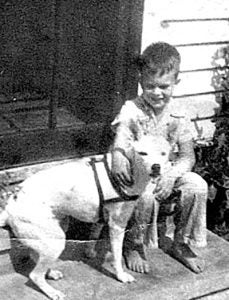And Now You Know: The Navy years were good years
Published 5:00 pm Saturday, September 21, 2019
In Orange, from the late 1940s to the mid-1970s, was a large fleet of U.S. Navy ships. It was unofficially called a “Mothball Fleet”.
Most of us did not realize it at the time but it was the largest fleet of inactive ships in the world.
Orange had a Navy presence since 1940 when Congressman Martin Dies, an Orange native, lobbied Congress to grant a contract for US Steel to build destroyers for the U.S. Navy. Among the first things built, by the Navy, was a housing project to provide for the naval personnel who would be arriving in Orange.
During the WWII years, destroyers, destroyer escorts, auxiliary vessels of several types, and wooden minesweepers were built for both the U.S. Navy and the Royal Navy by the three shipyards in Orange.
After the war ended, in August 1945, the Navy announced that it would build a two million dollar base for the storage of inactive Navy ships.
Construction would soon start on the first of 12 piers on the Sabine River and bids were sought for the construction of the base.
The first buildings built were the administration building and barracks for the naval personnel to be assigned to the new base.
Orange was selected because of the naval presence already there and the freshwater of the Sabine River would be less corrosive to the ships than a saltwater site.
The base would be part of the Texas Group, Atlantic Fleet. The purpose of the base would be to deactivate and provide maintenance for ships transferred to the reserve fleet.
Captain, W. E. Guitar, USN, was named commander of the Texas Group. Captain T. R. Cowie, USN, was named as the first commander of the Orange base.
On November 5, 1945, the USS Matagorda, AVP 22, a seaplane tender, was the first vessel to arrive.
In 1946, land along the river including part of the Riverside housing addition was cleared for the berthing area and the remainder of the 12 piers.
The administration building, barracks, and warehouses would eventually cover 166 acres of land.
At completion, there would be 150 ships initially berthed at the base. The aim was to be “A berthing station where ships were maintained in a standby state of readiness.”
Of the eight such bases, the Orange base would be the largest of the U.S. Navy and the largest in the world.
In 1951, the base became headquarters for the 16th United States Fleet, Inactive. The value of the ships was estimated to be $400,000,000.
Commander Ben T. Brown, USN, was assigned as base commander in 1965. A year later he was asked about the economic impact of the base to the City of Orange.
Brown replied that the payments for local labor, coupled with civilian and Naval contracts had totaled two point five million dollars and the payrolls for civilian and naval personnel had totaled $291,468. He further stated that the Navy had poured an average of three million dollars into Orange economy annually.
Naval personnel had worked alongside civilians when needs had arisen. An example was during the flood of 1953 when forces were needed to sandbag the levee around Orange to contain the rise of the river.
The fire department at the base had a mutual aid agreement signed with the Orange fire department if and when the need arose.
The base had been renamed the Naval Inactive Ship Maintenance Facility of Texas. Its new mission was to inspect and either restore, dehumidify, and maintain the ships or to “scrap” them or sell them to some allied country.
During the Korean War years,1950 to1954, 43 ships were reactivated for use by the U.S. Navy.
In 1967, the largest ship berthed in Orange was the USS Spokane, CL-120, a light cruiser, 6,000 tons, 541 feet long, and 75, 000 horsepower. There were 44 destroyers, 40 destroyer escorts, 25 minesweepers, and various barges, and drydocks. There were also 44 APDs.
APDs were unique ships. They were destroyers converted into transports capable of carrying 200 troops. They were used for small unit amphibious attack forces, like Marine raiders. The ships were high-speed transports capable of giving fire support to the landing forces.
There were a total of 189 vessels berthed in Orange with another 39 vessels under Cmdr. Brown’s command in the marine reserve in Beaumont. Also, under his command were seven tankers, 13 tugs, five transports in Beaumont with another 14 vessels at Mobile, Alabama. These were auxiliary vessels which required a different maintenance than the ships at Orange.
At this time Cmdr. Brown had 12 officers, 23 enlisted personnel and 188 civilian employees under his command.
In 1974, things would change in Orange. It was announced that the base would close. Next week, we will pick up there.
“And now you know.”







